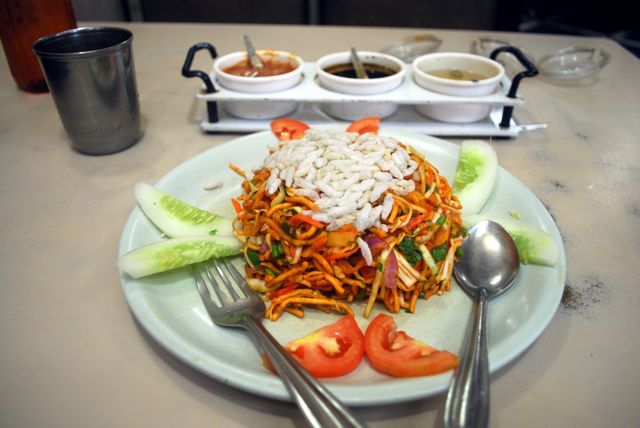It was only during my seventh or eighth visit to the heart of India – remember that catchy ad ‘Hindustan ka dil dekho’ – that I discovered its heart. Or at the very least, its lifeline. The river Narmada. Flowing softly between the Satpuras and Vindhyas, the Narmada becomes a stunning spectacle near Jabalpur, as it winds between towering limestone cliffs.
This is Bhedaghat, one of Madhya Pradesh’s lesser known gems.

The first time I saw Bhedaghat was as a child, through photos my parents had taken when they visited as newlyweds. I am not sure whether it was the mesmeric quality of the water, or the unmatched charm of black and white, but I remember being fascinated.
Many years later, I came upon more images of Bhedaghat – this time in colour – on a popular photography networking site. A couple of young boys were standing on the cliffs, poised to dive into the water to pick up coins thrown by pilgrims (in the hope, I am guessing, of having their sins washed away).
It took me a while to make the connection between these vignettes and those black and white images from my past. But when the penny finally dropped, I knew that it was time for me to go there. I got my chance a few months ago, when I made a detour to Bhedaghat on my way back home from Kanha National Forest, via Jabalpur.
Winter was approaching, and even in the bright warmth of the afternoon, there was a nip in the air as we approached the ghats. The moment we entered the Bhedaghat area, it became obvious that we were in marble territory; from five feet tall images of gods and goddesses to miniature Taj Mahals, there were rows of shops lining the main road and the narrow steps going down to the river. I resolutely ignored all offers to have my name engraved in marble or buy carved candle stands to take back home as souvenirs.


It was utter chaos by the banks, as large groups of holidaymakers shouted their way to the best bargain rates on the boats waiting to ferry them around. We finally managed to get a boat for just the three of us for what we were assured was a reasonable fare. The boatman went so far as to suggest that we would be so delighted by the end that we would offer more money on our own.
Given that kind of promise, it was difficult not to be excited.

The boatman kept up a steady stream of commentary in verse form through the ride, pointing out interesting shapes on the rocks and boasting of the various Hindi movies shot there. From Jis Desh Me Ganga Behti Hai to Ashoka, this location seemed to have captured the imagination of filmmakers.
He also kept up a steady stream of jokes on diverse topics from the wonders of nature to the travails of married life. This was interspersed with snippets of information about the geography of the place. One of the unverified stories about Bhedaghat is that once upon a time, these marble hillocks were close to each other, slowly drifting apart as the Narmada cut her way through.


Through the ride, we saw the shape shifting rocks through his eyes – human faces, elephants, Ganesha and much more. Most stunning were the colours of the marble, mixed with volcanic rocks that created a range from sparkling white to various shades of pink and yellow.
By the time we turned back, the sun had descended from high up in the sky, and in the muted sunlight everything seemed different, including the shapes and hues of the rocks.

Much later, when I was back home, I read explorer Captain Forsythe’s words on this marvel of nature. Upon sighting these rocks for the first time, he had waxed eloquent in his book ‘Highlands of Central India’, “The eye never wearies of the effect produced by the broken and reflected sunlight, now glancing from a pinnacle of snow-white marble reared against the deep blue of the sky… Here and there, the white saccharine limestone is seamed by veins of dark green or black volcanic rock; a contrast which only enhances, like a setting of jet, the purity of the surrounding marble.”
From there, we walked towards Dhuandhar Falls, literally meaning “misty”, a name it lives up to completely. We trudged up to the viewing platform for the most spectacular views, enjoying the cool spray of water on our faces and the thundering roar of the falls. After all, the Narmada takes a dive here from a height of 98 feet.


My mind kept going back to the marble rocks, and the fact that there are special boat rides on full moon nights, when the marbles shine like pearls. Given how stunning the experience was during the day, that was something I immediately put on my travel list (which only keeps growing). Next time, perhaps.
INFORMATION
Getting there
The nearest airport Jet Airways flies to is Bhopal, from where Bhedaghat is 280 km (5½ hours drive) away.
Accommodation
While most people make Bhedaghat a day trip from Jabalpur, staying overnight provides a better experience. Choose from the MPSTDC run Motel Marble Rocks or the slightly more upmarket Vrindavan Gopala Resort that offers great views of Dhuandhar Falls.
Travel Tips
~ Plan your trip around the cooler months after the monsoons, when the rivers are in full flow and the days are not scorching hot.
~ It is best to club Bhedaghat with a visit to Bandhavgarh or Kahna National Park, or the lush hill station of Pachmahri.
~ At Bhedaghat, make time for the 10th century Chausath Yogini temple on a hill close to Dhuandhar Falls.





Bhedeghat is so beautiful! And yes, am trying to tie it with atrip to Bandhavgarh!
That’s the best way to do it – and the combination of tigers with the marble rocks is unbeatable 🙂